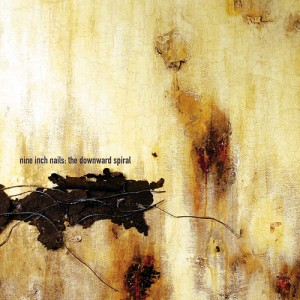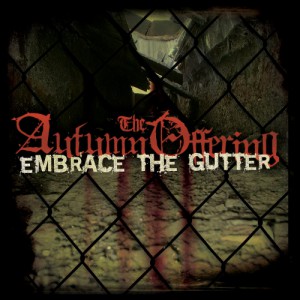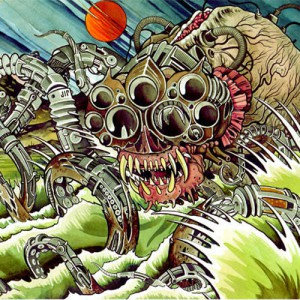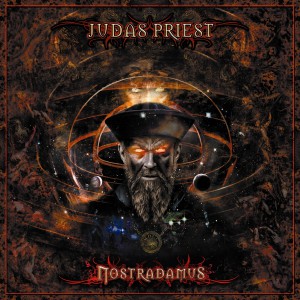Nine Inch Nails The Downward Spiral Review
General Information:
Artist: Nine Inch Nails
Album: The Downward Spiral
Genre(s): Industrial, Industrial Rock
Subgenres(s): N/A
Released: 1994
Length: 105 minutes
Language(s): English
Label(s): Nothing Records, Interscope Records
Track List:
01. Mr. Self Destruct
02. Piggy
03. Heresy
04. March of the Pigs
05. Closer
06. Ruiner
07. The Becoming
08. I Do Not Want This
09. Big Man with a Gun
10. A Warm Place
11. Eraser
12. Reptile
13. The Downward Spiral
14. Hurt
Nine Inch Nails The Downward Spiral Review
The Downward Spiral is a volatile beacon of industrial music by Nine Inch Nails. Released 2 years after the break through Broken EP, it seems as though Trent Reznor forsook a lot of his rock influences in favour of raw industrial aggression which actually led to a more sonically diverse album.
Songs like Ruiner, I Do Not Want This and Eraser are all characterised by thumping industrial drum patterns, layers of processed sound effects that are incredibly hard to identify and have enough distortion and noise meshed together to make you think that you’ve blown out your speakers. The guitar is still present in these songs at times but the rock influence is significantly less pronounced when compared to Heresy or March of the Pigs, both of which have an easier structure to follow because a lot of the time the songs don’t follow a particularly strong verse/chorus format.
While challenging sounds are a given within the industrial music scene, one can’t help but question the need for or motive behind some parts of the album. Particularly the minor noise music influences heard at the end of Mr. Self Destruct, which becomes unlistenable when it devolves into a formless mess at the end, or the chaotic end to Big Man with a Gun that is so layered up and loud that the only thing that can be picked out clearly is Trent Reznor’s frenzied shouting.
This isn’t to say that the processed sounds and distortion don’t always work because for the most part it is done well and it plays a major part in making The Downward Spiral what it is. In contrast to the dense noise, Big Man with a Gun is followed up by A Warm Place which will keep you on edge the first time you hear it because you can’t help but expect a loud burst of noise to chime in out of nowhere. This doesn’t end up happening and it makes this short ambient piece the most reserved part of The Downward Spiral.
Despite the length of The Downward Spiral, it rarely feels as though anything gets dragged out and if anything should have been cut out the first thing that comes to mind are the inflammatory lyrics revolving around rape on Big Man with a Gun (“held against your forehead/I’ll make you suck it/maybe I’ll put a hole in your head”). Reptile and Hurt both have crass lyrics as well but aren’t comparable to Big Man with a Gun and aside from that, the rest seems to focus on inner turmoil one way or another and are delivered through shouts, whispers and singing – all of which get at least partially buried under the uncompromising music which was a surprising commercial success. The vocal highlight of The Downward Spiral has to be the cheerfully sarcastic singing on March of the Pigs when the piano is introduced briefly.
The technology used to produce this album has dated surprisingly well and without knowing beforehand, you can’t pinpoint it to a certain decade like you can with a lot of other electronically produced music. The Downward Spiral is the musical equivalent of a torrent of verbal abuse that encapsulates self-loathing surrounded by a relentless gourmet of industrial rhythms which makes it an ideal introduction to the genre.
Performers:
Trent Reznor: Vocals, all other instruments
Mark “Flood” Ellis: Hi-hat (Closer), synthesizer (The Becoming)
Chris Vrenna: Drums (Hurt), programming, sampling, additional drums (Burn)
Adrian Belew: Guitar (Mr. Self Destruct and The Becoming)
Danny Lohner: Guitar (Big Man with a Gun)
Andy Kubiszewski Drums (The Downward Spiral)
Stephen Perkins: Drum Loops (I Do Not Want This)
External Links:
Nine Inch Nails Homepage
Nine Inch Nails on Wikipedia | The Downward Spiral on Wikipedia



